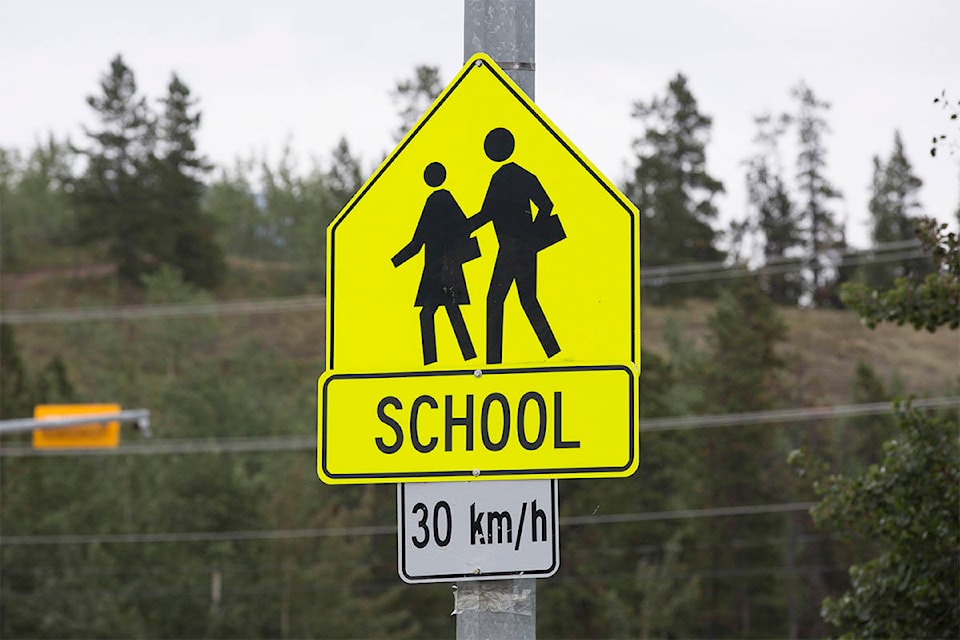It’s time for kids to head back to school, and once again drivers in the Comox Valley are urged to slow down.
Comox Valley RCMP says area motorists can expect a few extra eyes on the road, especially in school zones, with the return of students to class.
“Every time school gets back in, our municipal traffic section, lots of our front line members, will focus on those school zones to remind people to slow down,” says Const. Monika Terragni of Comox Valley RCMP. “There is definitely an extra focus put on it.”
School zones of 30 km/h run from 8 a.m. to 5 p.m. on school days through the school year.
“Usually, the times are listed on the signs as well,” she says. “People should be driving at a speed where they’re able to read the sign.”
Drivers face a system of graduated penalties for speeding, based on how quickly they’re going over the speed limit. Fines start at $196 for speeds of less than 21 km/h over the speed limit. Between 21 and 40 km/h over, it increases to $253. At 41 to 60 km/h over, drivers get into the excessive speeding penalties, meaning $368 and a possible seven-day impound of vehicles.
Terragni also reminds drivers to be cautious at all times in playground areas.
“We’ve got school zones and playground zones,” she says.
Unlike school zones, with set hours around school times, playground speed limits are 30 km/h every day of the year from dawn to dusk.
“Those are 30 km/h 365 days a year,” she says. “Some people, I think, don’t realize that.”
She just talked with a municipal traffic person that caught someone doing 80 km/h in a playground zone in August. The reason for these speed limits, she adds, is that children are unpredictable when they are in schoolyards or playgrounds.
“They’re unpredictable little beings,” she says. “That’s why those zones are there.”
RELATED STORY: 5 tips to help kids stay safe as they head back to school
Another thing to remember, Terragni says, is that driving at slower speeds reduces the chance of an accident or can reduce the severity in the event of one. According to ICBC, depending on vehicle type and road material, at 30 km/h, it can take 18 metres to come to a full stop; at 80 km/h, it can take 76 metres; and at 110 km/h, it can take 126 metres. For driving at speeds above 60 km/h, every five km/h increase doubles the risk of a crash. This increases to almost six times when driving 20 km/h above the average speed.
“It’s common sense and physics,” says Terragni.
“When you’re travelling 30 km/h, you’re able to stop a lot quicker than when you’re travelling 50 km/h.”
mike.chouinard@comoxvalleyrecord.com
Like us on Facebook and follow us on Twitter.
